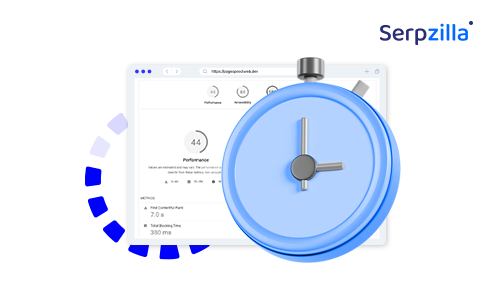How to Manage Client Expectations and Maximize Retention in SEO

Under-promise and over-deliver.
This is one of the commandments in the book Customers for Life by Carl Sewell and it holds true in the world of SEO more than any other.
While we know this intuitively, how do we know what is the precise amount of results that we can deliver?
How can we be sure of the outcome so that we can promise something to the client?
How can we maximize the profit earned throughout the lifetime of a client?
And most importantly, how can we turn the process of converting a lead into a customer and retaining them into a process?
Let’s try and figure out.
Do a Presale Audit
Say you are in touch with a prospect or a qualified lead. Whether it’s via an inquiry on your website or the result of an account-based marketing (ABM) campaign, it’s important that you pique the interest of your prospect in your SEO services.
The best way to do that is by showing how their site is lacking in certain areas – or by pinpointing what is exactly holding them down in the search rankings, or what is making competitors get ahead of them. Pain is a bigger motivator than pleasure, they say!
Typically, you start with a small technical SEO audit that highlights the major problems in your prospect’s website. You could also analyze a subset of their backlinks to see what percent are toxic or if Google has penalized their website. You can then recommend the removal or disavowing of such links.
Yes, such kind of analyses cost time and effort. By no means should your client or you take them for granted or demand them for free! Yes, there are free tools online that offer a quick audit of your homepage. Some companies even offer them on their website as a means to generate leads or acquire new customers.
But if you want to prove your expertise to your clients, then you need to provide personalized insights beyond such automated tools. Technical SEO is not makeup for a website.
If you’re a small business who needs to conduct audits manually then you should consider providing limited audits and recommendations up front, with a deal or offer to provide more effective solutions once the client has signed on the dotted line.
Set Benchmarks and Timelines
Once you think you’ve “hooked” a prospect – or, to put it better, convinced them of your ability to help them with SEO, link building or content marketing – it’s imperative to quickly have an agreement in place.
And for any worthwhile agreement, you need to identify some metrics and key performance indicators (KPIs), and promise to achieve them. What could these KPIs be?
- X keywords in the top 3, 5 or 10 of Google. You can track this with a tool such as Semrush, Ahrefs or Google Search Console.
- X% of increase in organic traffic in X months. You can view this in Google Analytics.
- X conversions for a pre-defined goal (such as purchase of a product). You can define and track such goals in Google Analytics.
The first goal – achieving rankings for certain keywords – is one of the most common KPIs in SEO. While the point of all SEO is rankings, it is imperative that you set client expectations clearly at the outset.
It is very important to inform your clients that there are no quick results in SEO. There is no magic. There are no shortcuts. Any landing page optimization, content marketing, or link building efforts take at least 3 to 6 months to deliver results. Google needs time to crawl, index and re-crawl your site.
The same goes for link building. It takes time to identify websites that are relevant to yours, reach out to them and convince them to link to you (unless you use Serpzilla). But of course it takes 3 to 6 months to build a critical mass or viable number of links. Here again, Google will take time to crawl through the pages that link to you, and determine the number and quality of your backlinks.
As and when your pages start to gather more impressions and clicks, they will move up the SERPs for more and more keywords. Make sure you are very transparent in explaining all this to your client and that they don’t expect results in one month.
Clearly Demarcate Roles and Responsibilities
Rankings are a shared responsibility between the agency and the client. Your contracts as well as verbal discussions should clearly and repeatedly demarcate the areas of responsibility before you start work.
First, you define the SEO-related responsibilities and accountability that your agency will undertake. The role of the SEO is to lead the horse to the pond, so to speak, but they can’t make it drink water.
This means that SEO is responsible to increase the client’s visibility in search results and bring qualified traffic to the website. However, if the product is not good enough or if the conversion process is not optimized, the client might not see any increase in sales. For example, a dentist might rise to the top of Google’s local results for a city and start receiving a lot of calls, but if their office can’t take the calls or book appointments because they don’t have a receptionist, then it’s not the SEO agency’s fault.
On the other hand, if sales or revenue goals are built into the contract as a pre-condition for payment, then the client must provide in-depth data on their conversion and ordering processes. The agency, on their part, should get their attribution model right and tie conversions clearly to SEO.
When the objectives and tasks of the campaign are clear and agreeable to both parties, it creates the foundation of a long-term, win-win and profitable partnership.
Work, Track and Report Proactively
Once a new contract is signed, what’s the first thing you do? Celebrate with a few beers, right?
While partying is inevitable, what’s important is that you begin work on the campaign immediately. Don’t waste time basking in your success; focus on reassuring your clients that they made the correct decision.
A wise man once said:
You already agreed with your client on the benchmarks and responsibilities. Now it’s time you chalk out a roadmap and move ahead step-by-step.
- Define the deliverables.
- Set milestones for each deliverable or results to be achieved at the end of every month and quarter.
- Break down the deliverables into a specific list of tasks.
- Decide the team members who’d be accountable for each deliverable.
- Have a point of contact or project owner on the client’s side who’d be responsible for making changes to the website and providing data or information as and when requested.
- Get access to Google Analytics and Google Search Console as well as any analytics tools and dashboards that the client uses to track their sales and marketing metrics.
- Set up tracking for keywords, positions, links and traffic in all the SEO tools that you use. For example, you can monitor the status of your link building campaign in Serpzilla – how many links you’ve built so far, how much budget you’ve spent, and so on:
Similarly, you can monitor the rankings for your keywords in Semrush:
Don’t leave any stone unturned. If you’ve been contracted to build links for a client, it doesn’t mean you do just that. You need to keep an eye on the content that your client is creating, see if their technical or on-page SEO is correct, be alert for negative SEO or bad links, and check for Google penalties as a bare minimum. If the client’s team changes the headline on an important landing page without informing you or if a competitor builds porn links to their site, these would directly impact your results, so you should be the first to notice these changes.
All the major SEO tools help you track all this, so there is no excuse for you not be aware and alert all the time. Remember, SEO is an integrated field that has an impact on most other digital marketing channels and on the company’s growth as a whole.
Another important thing is proactive reporting. It’s not just enough to track all the metrics; it’s also necessary to keep your client appraised and updated of all the progress. Speed is of the essence here. Set up triggers and configure alerts in your CRM and other dashboards that remind you to update clients when important thresholds are passed – regardless of whether they’re good or bad for the campaign. The more frequently you communicate, the more feedback you take (and act on it), the more your client will trust you.
Communication Builds Trust
Constant reporting, communication and education are essential for building a great brand-client relationship. You can even celebrate major wins together. There are many instances of close friendship between SEO guys and their contacts at customer organizations that have proved to be win-win for both businesses.
When both you and your clients fully trust each other, you can be involved in setting the future strategy of their business while they can be instrumental in bringing you consistent growth and profits.











